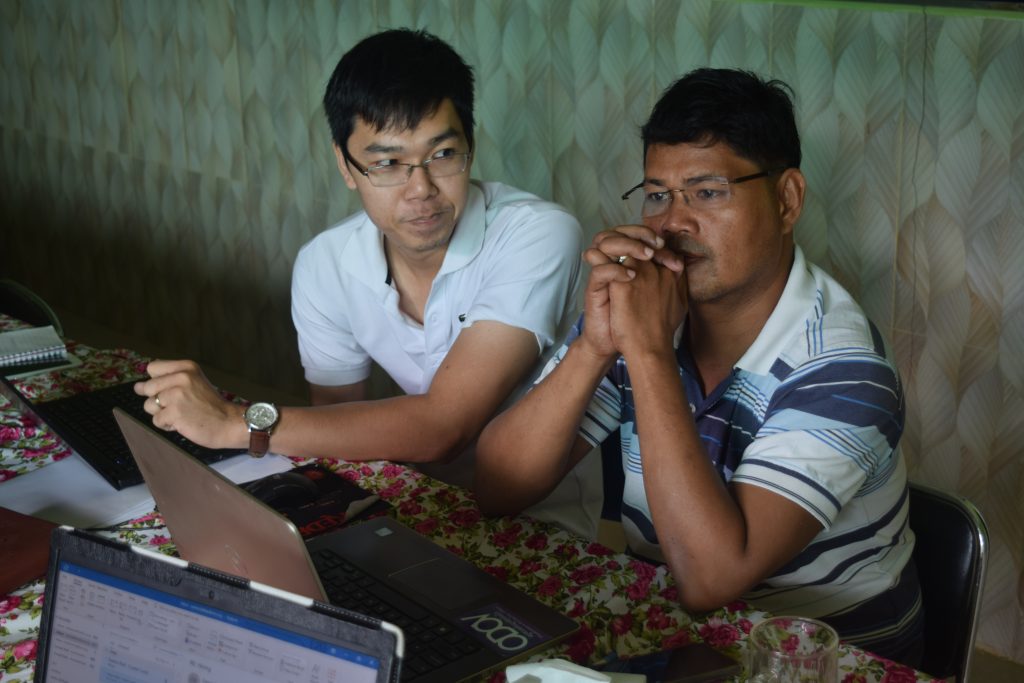On the Thursday and Friday after Christmas, I headed out to rural Prey Veng province with our new Planning/Monitoring/Evaluation Coordinator Visal to meet with one of MCC’s long term partners, the Organization to Develop our Villages (ODOV).

ODOV was, originally, MCC Mesang until it localized in 2004. The file cabinets seen in the photo above document this historical connection.
Visal and I were meeting with ODOV’s Executive Director Sopheat. He was an MCC staff from the 90s until 2004 when the project localized. ODOV has submitted a five year project proposal to a donor and MCC is supporting them with revisions.
It’s a wonderful project that I’ll talk about more in the future – in short, ODOV has long been doing great rural development work in Prey Veng province but this project will push the technical capacity for that work out to the local communities. The villages themselves through grassroots institutions like agricultural cooperatives will become the primary agents of change. Essentially, this project works ODOV out of it’s current role while empowering the communities to self sustain livelihood improvements (this means that ODOV will go in a new direction in five years). I respect Sopheat for deciding to empower the local community rather than try to solidify ODOV’s traditional role. I have seen many otherNGOs resist this kind of change. It also means we’ll have some fun strategic planning talks in three to four years.

ODOV and Sopheat were featured in the most recent edition of MCC’s A Common Place magazine. I gave him our copy so that he could share with his staff and the villagers featured. Digital copies are available on the MCC website in PDF format and a subscription to the print version is free.
Usually, meetings to revise project proposals don’t make for interesting photos… But Sopheat is an animated fellow and I think I got some good action shots.
My introduction to project proposals and grant writing came during my first term in MCC. I worked with my partner, the Prey Veng Irrigation Office, on very large but straightforward project proposals. The number of direct and indirect beneficiaries for a irrigation canal was relatively simple to calculate. It’s harder to quantify the impact of agricultural cooperatives or training villagers to teach technical skills in ninety villages.
I found myself grateful for my work experience at Peaceful Living. I did a lot of data analysis and proposal work there. Impact analysis was much more ambiguous. My favorite example was a long term initiative to try to quantify belonging (specifically for people with disabilities in their local communities). We never quite found a formula but we developed some useful indicators and I learned a tremendous amount (which was useful here).
Circling back to the present, ODOV’s underlying data and project proposal were solid. But we needed to do some formatting work to make the number of direct vs indirect participants clear, respond to comments from the donor, and make the goal of the project explicit. On a quick read, the activities looked similar to past projects – we put stronger emphasis on the ‘train the trainer’ aspect and agricultural cooperative self sufficiency. Bring those core distinctions ‘above the fold’ as they say in marketing.


Wow! You have really jumped into the work with both feet!
This sounds amazing!!